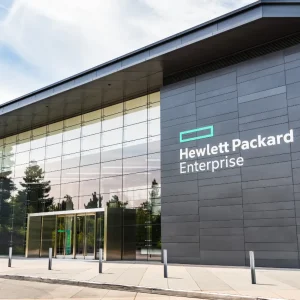
File-sharing technologies, which were originally developed to allow consumers to access and download copyrighted material illegally, are now being used to find viable alternatives to cloud-based services.
Originating in the 1980s and 90s, peer-to-peer (P2P) file-sharing technologies were

originally developed by organisations such as Napster and LimeWire to facilitate the illegal sharing of music, films and computer games. While such technologies were geared to individual users, they are now being adapted to construct private networks capable of sharing data across a number of different computers among a defined group of users.
This interest in traditional P2P file-sharing technology is being driven by growing demand for cheaper, easy-to-use data-storage and file-sharing services. To date, cloud-based services have had the edge over P2P file-sharing networks because their server farms can store vast amounts of data that can be accessed anytime, anywhere. By contrast, P2P file-sharing networks have relied on the memory and processing capacity of a number of individual computers and require users to own access rights.
Despite some minor drawbacks in terms of functionality, the latest P2P file-sharing networks can benefit from significantly lower storage costs than cloud-based services. The latter have significant overheads in the form of hardware management and maintenance costs. In the case of P2P file-sharing networks, storage costs can be spread across each of the host computers.
Eliminating central dependency also means they can be more reliable as a failure by one peer cannot undermine the whole system.
The main drawbacks for P2P file-sharing networks to date have been derived from their decentralisation. For example, they can be difficult to manage because there is no single administrator responsible for switching on or off every machine, or overseeing access rights and settings across the network. Back up and data recovery can also be more difficult and viral disruption can be harder to control. Instead of putting off innovators, however, these drawbacks have presented a new engineering challenge.
Recognising the potential of P2P file-sharing technology, some of the best known service providers, such as Dropbox and Hightail, are now enriching their patent portfolios with new takes on technologies that were first developed for illegal file-sharing applications. In 2016, Dropbox filed a patent for a technology that would allow users to share and use documents that have not been saved onto a file-sharing network. A hybrid cloud and P2P file-sharing solution, this technology could be developed to allow encrypted data to be shared quickly and easily without having to go through a central resource.
Other companies are also moving in this direction. VMware, a subsidiary of Dell Technologies, has recently had a patent application published for a scheme which uses P2P technology when issuing software updates. In this case, when client devices on a local network need to update, they are first directed to peers for the software update, rather than to a central server. When applied to corporate networks, this technology could help to improve bandwidth utilisation and streamline systems management.
In a separate move, technology giant, IBM is attempting to patent technology that would allow enterprise network groups to share group files on a P2P basis without needing to access a central server. The company appears to be showing more interest in cloud-based services and is moving towards offering hybrid storage solutions.
AirWatch, a leading provider of mobile device management and enterprise mobility management solutions, has also been granted patent protection in the US for technology that allows enterprise users to access restricted files from peers, rather than from a central repository, but only once appropriate verification steps have been completed.
Second-guessing the direction that innovators will take in any field of research and development is never easy. However, in this case it is possible to imagine a world where P2P file-sharing networks could automatically direct certain documents or files to an individual user in the same way as photos taken on an iPhone are automatically backed up to the cloud. Such technological enhancements could start to reverse the rush to the cloud; giving P2P file-sharing networks a competitive edge in terms of both ease-of-use and cost.
In this dynamic area of R&D, as file-sharing technologies find mainstream application, there is an opportunity for innovators to patent a technology that is later adopted as a new operating ‘standard’. This could lead to lucrative licensing deals as other companies seek to adopt the same technology. In order to take advantage of this opportunity, innovators should focus on developing technology that finds widespread use and which makes P2P file-sharing efficient, easy-to-use, secure and reliable.






